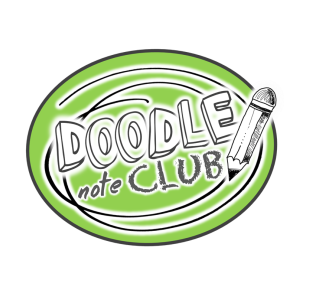The way that we can blend text and images in a doodle note strategy leads to better comprehension and retention of our lesson material. This combination of visual and linguistic input is based on Dual Coding Theory and supports student learning.
I call these “visual memory triggers” because the student brains process the text and image in a way that builds connections and helps them to remember the concept later on.
A solid visual trigger is based around an image that either fits the lesson material or fits into an analogy that will help students remember. Here are a few examples to get your brainstorming going.
Use these ideas to try to think through some visual triggers that you can incorporate into your next doodle note lesson!
“Commutative” Property – to move back and forth: Students write one letter per bus window and remember “commuting” to and from school as the connection.


Branches of Government: Students write one per “branch” on a tree – a classic analogy for this concept to remember the three parts that share one core trunk (shared in the Share Zone).


Scarcity- Cookie Analogy: This visual of Cookie Monster and a cookie jar sticks in students’ brains as a reminder of how scarcity works (shared by Wendy in the Share Zone).

States of Matter: The text fits into an example item from each state of matter for students to remember the differences and associate a sample with each.

Then, the ice cream cone and its drips are visual reminders of converting between two states, and the thermometer reminds students that this is from a change in temperature. This one is packed with visuals! (shared in the Share Zone)


Volume vs. Surface Area: The students remember that the lettering for “surface area” splits into two words to fit into the handle and bristles of the paintbrush. Surface area is like “covering.” The term “volume” fits better into the pool because its like “filling.”


Three Layer Reading Strategy: Students remember that this method requires layered re-reading, like the layers of a cake.


Imperialism- Playground analogy: This memorable analogy with visuals helps students remember how the nations of the world operated with a bullying system through industrialization (shared by Leah in the Share Zone).

Absolute Value Equations: This “splitting” with an axe analogy helps students remember that whatever is between the absolute value bars gets (|SPLIT|) into two separate equations. They can see that two-headed axe shape in their memories when they come across this type of equation and they know what to do.


Hopefully these samples will help you see how people are using visual triggers in their pages in different courses, and how you can make some of your own that will suit your own grade level and subject area.
Take some time to stop and reflect. Get creative, and see if you can think up a great visual analogy that blends text and images for your next doodle note lesson! We can’t wait to see what you come up with!
